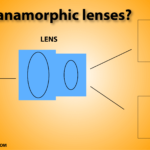Cannon releasing a new mirrorless canon rf lenses system. It meant that a new mount was needed for the ESR and RP cameras. Hence the new RF mount and lenses. The RF lenses are recognizable as canon glass as soon as you pick them up. you get the familiarity of Canon L Series lenses.
Since 4yrs the EOS R mirrorless scheme debuted, and the RF lens team has grown . As of August 2022, 32 RF lenses have been free, top an extreme-wide-angle 14mm to a great telephoto 1200mm.
With a mount connecter, EOS R system operators can also use over 180 EF mount. Lenses that were free through the film and DSLR cameras.
How are RF & EF lenses dissimilar?
With older EF lenses inexpensive than RF lenses of a similar class, are RF lenses the better asset
Canon has a new project viewpoint with these RF lenses. Which is to have the lenses brighter and extra customizable. A ration of people say they feel plasticky, but from my knowledge, the texture is very good high excellent.
Canon rf lenses is using a solvent-soft outer explosive than what they usually have second hand in the past. I reason people are overlooking that Canon lenses have had a soft outer shell for an extended time now.
About the electric manual directing with the novel RF lenses, it’s the finest I’ve second-hand so far. You can get very precise with it and its textures are normal, and healthier than any extra brand in my view.
You have about MF focus ring understanding choices so you can usually. The focus ring to alter with revolution speed or you can link it to revolution grade.
If you link it to a revolution grade the whole thing is the same as a physical lens. You can also regulate the way the revolution of the physical focus ring.
Canon rf lenses mount has aged, and the latter rare gaps have stayed plugged. Canon has assumed us a natural macro lens in the method of the Canon RF 100mm f/2.8 Macro IS USM (opens in new tab).
(With up to 8 breaks of stabilization, 1.4x increase, & bokeh control). And on top of the vivid 600mm f/11. we’re also receiving the USM (opens in new tab) and Canon RF 400mm f/2.8L IS USM. (unlocks in new tab) to content our pro telephoto rations.
So, disadvantaged of more ado, now are the premium Canon RF lenses on the marketplace correct. The suitability, we’ve riven these into zoom lenses and primes. with the straight focal distances first and occupied up to the lengthiest.
RF lenses
Canon rf lenses mount scheme is intended for mirrorless cameras, so it doesn’t essential to leave space for mirror movement. This resources more lens project flexibility. Creation it calmer to accept a lens shape that optimizes picture value.

The RF mount has an estimated spinal standby of 20mm. But RF lenses can be envisioned with a back-focus objectivity quicker than 20mm.
To Avoid blocking the mirror drive, EF lenses need to have a back-focus objectivity of at a smallest 44mm.

Canon rf lenses can be intended with a back-focus standby that is petite than the 20mm projection back coldness.
Similarity: Mount diameter

RF and EF bases have a similar 54mm stand diameter. A greater mount width types it likely to use a greater lens component for the last lens. This safeguards that light bends less earlier it affects the picture sensor and then drops lens aberrations.
Though the EF mount was intended over 30 years ago. The EOS R scheme engineers it was good enough and accepted the similar mount length for the RF mount.
RF lenses have more advanced technology
Debuting in 1987, the EF mount was intended to be future-resistant for at least 30 years. But how about the following 30?
Canon EF mount debuted in 1987. As the first completely electronic mount that didn’t require any mechanical link between the lens and camera body. it was a game-changer developed with the next 30 years in mind. And that shows in its cross-compatibility. You can use an EF lens free 30 years ago on a new camera body, and it would still effort well with very few useful limits.
But it’s been over 30 years, and camera skill has healthier very. To take full profit of the latest facts, it was vital to growing a new base that could last relevant for the following 30 years.
This was the inducement late the RF mount, which was advanced together with the EOS R mirrorless scheme with three makings in mind.
1.Healthier picture excellence
2.Advanced functionality
3.Tall cross-compatibility
What is it and why does it matter?
The flange back distance mentions the coldness from the lens mount (on the camera lateral) to the image sensor. But what actually moves the image value is the back-focus distance, which is the reserve from the last lens to the image sensor.
EF lenses
The EF mount scheme was intended for SLR cameras, which have a mirror in the obverse of the image sensor. There wants to be planetary for this mirror to vary up and down.
Which income the back-focus coldness of EF lenses cannot be too brief. This design limit makes it firmer to optimize EF lenses for image quality.
RF lenses
The RF mount scheme is intended for mirrorless cameras, so it doesn’t essential to leave space for mirror undertaking. This income more lens project elasticity, making it easier to adopt a lens form that optimizes image excellence.
The RF mount has a projection back reserve of 20mm, but RF lenses can be intended with a back-focus reserve shorter than 20mm.
Great aperture and wide-angle lenses profit the greatest from the Canon rf lenses mount. One sample is the RF16mm f/2.8 STM, which would then be much greater and weightier.
So good it didn’t need to be changed!

The RF and EF mounts consume a similar 54mm mount length. Larger mount diameter types are likely to use a larger lens component for the last lens.
This confirms that light bends less early than it ranges the picture sensor, so dropping lens abnormalities.
While the EF mount was planned over 30 years ago, the EOS R scheme engineers definite it was good sufficient and accepted the similar mount width for the RF mount.
canon rf lenses have More pins, better communication
The Canon rf lenses base has 12 electronic connection pins, 4 extras than the 8 pins on EF lenses. These, motionless with a healthier display way, let earlier memo between the lens and camera body linked to EF lenses.
Info on focusing, zooming, aperture, image stabilization, and numerous lens deviations are quickly sent to the camera, letting a classier controller.
They have a more modern and up-to-date design Canon hasn’t held back with these new lenses right away releasing quality glass like the 50-millimeters and 85-millimeter 1.2 lenses. With the fast 28 to 70-millimeter f/2 zoom optically the RF line appears to be as good as it gets right now with amazing sharpness definition.
The colour reproduction all around all of the Canon rf lenses has a brand-new feature of Canon a smart control wheel at the front of the glass it can work as a traditional aperture ring. It can also be customized to control shutter speed ISO or exposure compensation this is a great addition and makes shooting a much more enjoyable experience.
Depth about canon rf lenses
When handling the camera as you know you have more options to control. It in a way that suits your canon knows that a lot of their users will have traditional EF lenses already so the main is sure to provide lots of adapters.
The EOS R and RP cameras from the get-go. you can use EF or even EFS lenses on the new cameras using a basic adapter which makes them behave and perform exactly like they would on a DSLR a controlling.
The adapter is also available which adds the customizable ring features to any EF lens. You mount on your camera the last adapter making sure to use all the space available between your EF lens and the sensor.
The use of a drop-in Nd or circular polarizer filter behind the glass bypassing. The need of screwing anything in the front is great for fast lens swapping as the filters will always stay with the body and it is especially handy for extreme wide-angle lenses without a front filter.
Threads like a fisheye or similar I do feel like when using the EF lenses with the adapter the focusing is a lot more responsive.
The adapters are a great option if you already have a big range of EF glass as it means you only need to buy one of the new cameras to get into the system. But for the best results, the Canon rf lenses lenses are the way to go as they are designed specifically for the new mount.
The short distance between the glass and the sensor means the chance of distortion and better optical performance as mentioned. before canon didn’t seem to hold back with these new releases right away jumping into a high-quality glass for their new system these are beautiful lenses.
which we think anyone would be happy to own and set a new standard for cannon from now on you.
ALSO READ: Types of lenses for camera




